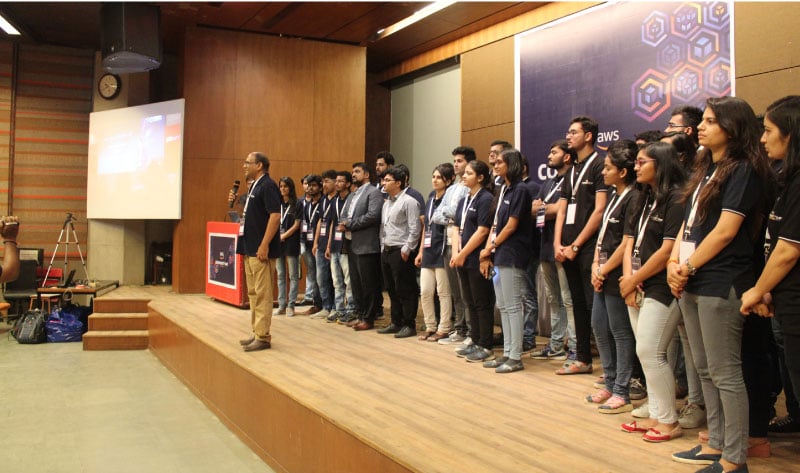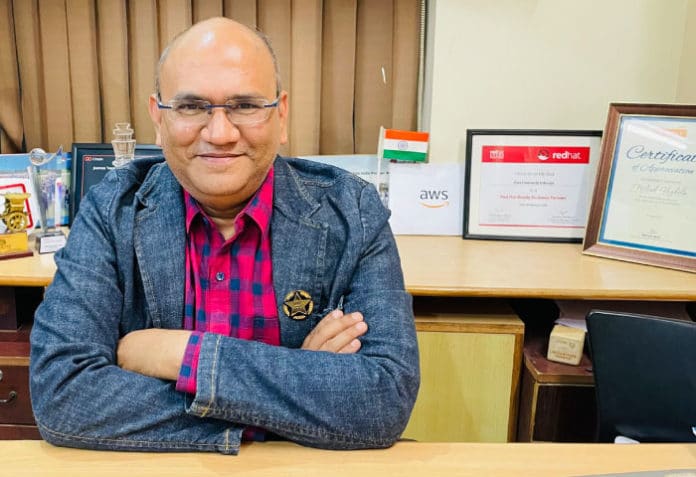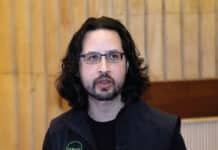Nilesh Vaghela is an AWS community hero and founder, ElectroMech Corporation, a cloud and open source company. According to him, contributing to open source is a rewarding act in itself. However, it needs commitment and there are many steps involved in the process, right from selecting a project to ensuring your contribution is noticed. In a conversation with Abbinaya Kuzhanthaivel of OSFY, he shares a few tips on how developers can help to improve India’s contributions to open source.
Q. Can you tell us a bit about your current role and contributions to open source.
A. I am currently an architect working on automation. I lead multiple teams and also contribute majorly to Invinsense, an open source security service platform. I started open source groups in early 1998 and had around 1500 members even then. A group (https://groups.google.com/g/vglug) I am handling now has been very active since 2014-15.
Q. How did you start working with open source projects?
A. I am a mechanical engineer by qualification, and was dealing with modems and UPS systems at my firm ElectroMech Corporation. I slowly got dragged into handling PCs, networking and Linux. I started experimenting in 1996 after getting inspired by seeing over 150 computer servers running on Linux at a Nuclear Science Centre. That’s when I converted my company entirely, focusing on open source for training and support.
I can proudly say that I was one of the first and early adopters of open source — helping customers to understand what is open source, what are its benefits, what’s available for free, security or code issues, and so on. We got at least four or five customers in Vadodara supporting us, and we eventually promoted ourselves through advertisements in the Yellow Pages. We partnered with Red Hat and the journey continues till now.
Q. How do you think open source has evolved since then?
A. I can say that, earlier, open source was a passion that fascinated and attracted people to participate. I was particularly impressed hearing user-friendly stories across the world when some Siberian contributors were working to improve water scarcity. It was more like a corporate social responsibility (CSR) activity. A board would be created by people and experts to govern and take projects forward. People would come in for the love of technology without expectations.
I did not believe then that open source could get commercial, but it is the driving force for most of the innovation and technology today, and many more enterprises are adopting it. We are looking forward to a great balance in contribution to and use of open source, as we have people, communities and big companies coming into play. This is the real future and power of open source.
Q. Could you share some of your challenges?
A. Initially, I walked alone but people joined once they knew my intentions were good. I created a lot of communities without any expectation, but did get paid indirectly in terms of reputation or fame; some people understood that I was a technical expert and gave projects in the long term. As it was very early days, people started joining the community and contributing without much effort. The goal wasn’t to get business and hence I can say I didn’t really face any hurdles.
Q. What are your leadership mantras and lessons from being a community leader?
A. First, if you want to start a community, then be neutral and don’t harbour a biased opinion. It may look like you are running a community as a leader, but remember those joining you are contributing equally. And never demotivate anyone. Be polite while making comments and addressing queries. Whatever the question, if you don’t want to give an answer, then choose to be quiet. But don’t stop anyone from asking. Help them build expertise.
Second, don’t involve the community in business. Do not mix and match the goals of your business and community. Have a clear differentiation.
Always try to encourage people to participate instead of delivering instructions as an expert. If you find people are interested to lead and take initiatives, then give them the stage. Invite and engage them in the community. That will help you to make more community leaders. Also, keep your community simple and don’t involve sponsors in the initial stages.
Q. Who do you look up to for inspiration?
A. Richard Stallman, the father of the open source movement, is my inspiration and I have always admired his projects.
Apart from him, I have an interesting incident to share that inspired me to work on open source. At the time when I started working on open source, most of the software for the Nuclear Science Centre was based on the Windows OS. However, many scientists wanted to work with Linux based software. And within two or three months, they actually created Linux drivers. This is what fascinated me – that the user can create these drivers which may not be possible in the case of proprietary software. I really liked the fact that open source empowered the user.
Q. Your thoughts on the open source landscape in India and the scope for improvement.
A. India is the largest consumer of open source and we are focusing on becoming a contributor. With so many developers around, we still do not have software giants in India. What we have mostly are service providers and not innovators. More people should become contributors to open source and develop something with international labels.
The very thought of contributing to open source should begin from the level of schools and colleges. Fortunately, the Gujarat government has already introduced lessons based on Linux from Class 8 to Class 10. It is important to educate and make youngsters aware of open source models.
Second, we have to develop good mentors. When people start contributing, it is important to find an open source mentor working in that particular project. The mentor gives a small assignment, tries the code and then commits it. If everything goes fine, the contribution is increased gradually. Unfortunately, we have very few mentors available in India. We need to prepare a lot of mentors or maybe connect to those across the world.
Third, we need to encourage those who come forward to contribute. Once you are a recognised developer or a person contributing to open source development, you also progress in your career and business.
India can be a major contributor to open source by following such simple methods.
Q. What do you think about the coding requirements to contribute to open source?
A. From my experience, if you know the internal parts, how to develop the application, what code standard you should maintain, and how to manage the team and other best practices, you may not have to actually worry about coding expertise.
There are other roles too with respect to designing, security maintenance and integration. See what works for you. Develop and strengthen your skill in what you like to do. If you feel coding still interests you, then take the support of fellow developers to learn it.
Q. How do you shortlist a project you would like to contribute to?
A. You need to understand your top few interest areas and then do your research on the projects happening around them. You need to figure out the area of requirements or openings for contributors and more volunteers. You can start small to practice and then build expertise.
Avoid going by the trendy topics; what’s important is your individual interest. For instance, DevOps is in high demand now and you may tend to go for a DevOps project. Do not make this mistake.
You can find open source projects on Cloud Native Computing Foundation (CNCF), Apache, Fedora, Red Hat, and so on. This way you can also find mentors who are already working on projects and can get proper guidance.
Q. Projects have their own purpose and target audience. Sometimes they even misalign with open source goals. So, what does one check before contributing?
A. I agree it becomes challenging when somebody starts an open source project and then commercialises it. But this is always a risk, and should not discourage you.
First try to check out the group — how popular are the contributors working in the group, how long have they been contributing, and how reputed are they. And once you join, observing everyone and everything is the key. Try to learn at least for three to six months, and understand how everything works. You can always leave the project if you find the intention is wrong. But if you feel it’s all right, then go ahead and contribute.

There are certain licence checks that you can do, say, like GPL version 3. You can also look at unmodified licence versions like the Apache open source licence.
Q. Do you think big companies will accept contributions from freshers?
A. Yes, of course. Companies also like mentoring. They usually don’t allow you to contribute directly, but may give you a small assignment initially. A mentor will first try to understand what skill you have and how good you are at it. Once they recognise you have the kind of skill that is needed, they will continue to guide you or assign you to some other mentor based on your skill. The initial stages are very crucial. Many companies do some sort of screening, and you may be allowed to contribute only after you have proved your ability.
Q. What are the initial challenges that contributors have to overcome when picking up projects?
A. First, you should be very serious about your contribution. There are no written commitments and contributors may tend to take the work lightly. That’s totally wrong. Try to dedicate 8-10 hours or whatever is feasible each day. If you are skipping this commitment because you feel there are no immediate returns, then you will not be a good contributor.
Always adhere to a mentor’s guidance strictly at the initial stages. This is very crucial for a healthy contribution. Sometimes it may happen that you believe you are good at something, while your mentor may not assign a project based on that skill. Simply approach your mentor in such scenarios and ask him what you should do, what is your role, and how you can contribute.
Q. Many developers do not get replies after submitting the contribution to a project. How does one make a submission noticeable?
A. Write a small blog on the project you are planning to contribute to, covering aspects like what you like in it, what you don’t like, and what can be improved. Such a positive and promotional approach can greatly help you.
Be a part of the group and be involved in activities related to that particular project. Instead of contributing, first try to engage with the group, and this will increase the chances for you to get adopted as a contributor.
Once you have a better understanding of the project, not only will your work be accepted but you will be able to better align yourself with that project.
Q. How do you overcome a situation where your contribution is not accepted?
A. Just understand that this can happen for many reasons — maybe you are not in the right project or you have not contributed correctly. If the project is country driven, your request may not be accepted. Hence, remember to have a checklist as stated earlier. Don’t worry if your contribution is not accepted because either you are not fit for the project or the project is not fit for you.
All I would recommend is try to identify four or five projects, and at least one among those projects you work on will probably be accepted.
Q. What is your message for our readers?
A. Open source is the driving force behind most of the innovation happening today. Instead of just using open source, let us try to contribute according to our capacity and skills. Contributions can be in terms of code, documentation, testing, blogs, money, etc. It’s time to contribute.
Q. Any hiring plans for ElectroMech Corporation — what are the roles and skill expectations?
We have requirements in cloud DevOps, and are hiring cloud architects, Python developers, Linux architects and security professionals.


















































































